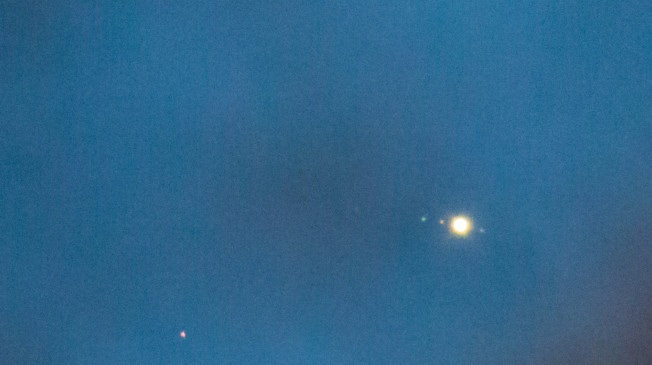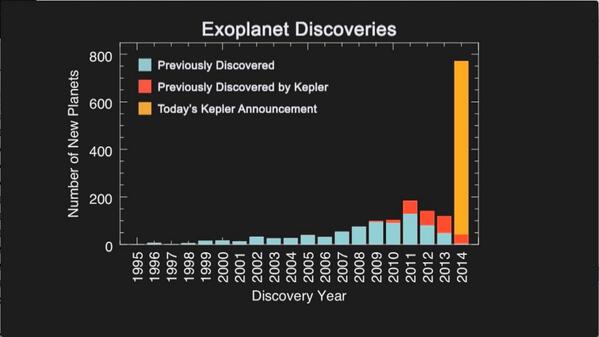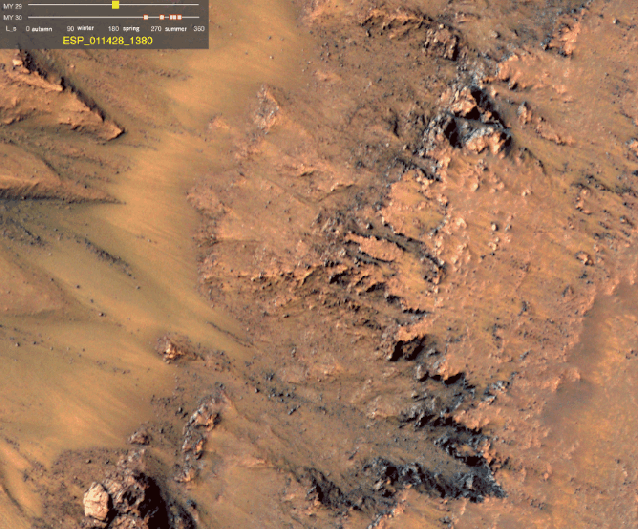
I feel like I may have blogged this at some point in the past, but couldn’t readily find it. At any rate, and Killscreen points the way to Scott Listfield’s AstronautDinosaur, where NASA’s finest find themselves on all manner of adventures.
Haunting the Web Since 1999

I feel like I may have blogged this at some point in the past, but couldn’t readily find it. At any rate, and Killscreen points the way to Scott Listfield’s AstronautDinosaur, where NASA’s finest find themselves on all manner of adventures.

NASA sets aside some money for a robotic mission to Europa. “No details have been decided yet, but NASA chief financial officer Elizabeth Robinson said Tuesday that it would be launched in the mid-2020s.”

NASA announces 715 new planets found by the Kepler telescope, and that’s only from the first two years of data. “About 94 percent of the new alien worlds are smaller than Neptune, researchers said, further bolstering earlier Kepler observations that suggested the Milky Way galaxy abounds with rocky planets like Earth…four of the worlds are less than 2.5 times the size of Earth and reside in the ‘habitable zone,’ that just-right range of distances that could allow liquid water to exist on their surfaces.”

Via io9, Scientists at NASA’s JPL find the strongest evidence of currently extant water on Mars yet. “We still don’t have a smoking gun for existence of water…Although we’re not sure how this process would take place without water.”

In the nearest reaches of space (a.k.a. the ISS), NASA scientists plan to create the coldest spot in the universe, in order to toy with the fabric of reality. “No one knows where this fundamental research will lead. Even the ‘practical’ applications listed by Thompson — quantum sensors, matter wave interferometers, and atomic lasers, just to name a few — sound like science fiction. ‘We’re entering the unknown,’ he says.’

Where do bad folks go when they die? They don’t go to heaven where the angels fly. Mars? Hrm…well, maybe. Curiosity finds the remnants of what appears to be an ancient Martian lake in Yellowknife Bay, part of Gale Crater. Unfortunately, “[e]ven if there were fossils in the mudstone, Curiosity doesn’t have the right kind of equipment to see them. That job will be left to the Mars rover set to launch in 2020.”

Er, yeah, not sure what they were thinking there. In any event, in honor of this dubious messaging, Popular Science offers eight historical examples of octopi taking over the world. Above is Standard Oil, smothering both ends of Congress with its undulating, oleaginous reach.

Because of sequestration and other budget cuts, NASA is forced to cancel its advanced spacecraft power program, threatening future missions past the asteroid belt. “ASRGs had been under development by NASA for over a decade, and had been planned for use by 2016 in the next low-cost planetary exploration missions…Because of the limited cost cap imposed on these missions, they’re now essentially limited to the inner solar system. Missions with bigger budgets that could afford regular RTGs will be bottlenecked by the production rate of Plutonium to maybe once or twice per decade. Goodbye, outer planets.”
